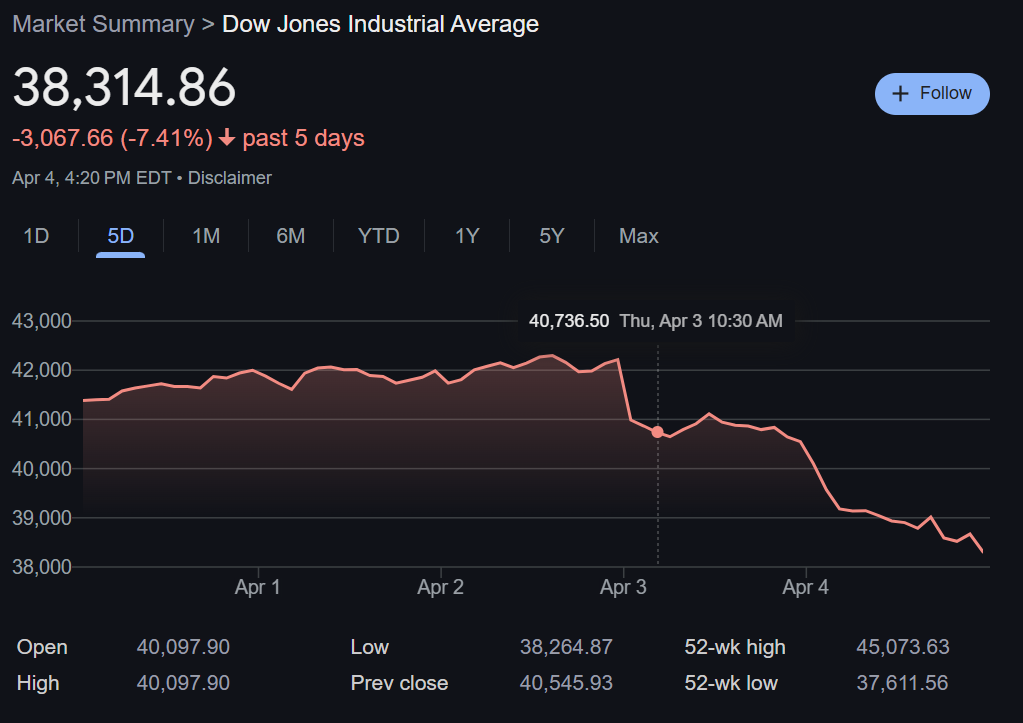April 4, 2025, was a day that anyone with a financial stake, be it on Wall Street or even in alternative markets, like the burgeoning trading card industry, is unlikely to forget. As the Dow Jones Industrial Average plunged more than a stomach-churning 2,200 points—a jaw-dropping drop of approximately 5.5%—and the S&P 500 along with the Nasdaq each slid nearly 6%, the echoes of this turbulent Friday rattled far and wide beyond the glass towers of financial districts. The dramatic upheaval was triggered by escalating trade tensions, with China having introduced its latest, biting tariffs on U.S. imports, thrusting global financial markets into a state of frantic flux. But what could this storm in traditional markets mean for the passionate collectors and astute investors entrenched in the world of trading cards?
In recent years, the trading card market has experienced a renaissance of sorts, exploding into a space that blends nostalgia with sophisticated investment strategy. Once beloved keepsakes tucked beneath mattresses and inside shoeboxes, trading cards have emerged as legitimate investment channels, bolstered by record-smashing sales and soaring card values. Iconic athletes like Shohei Ohtani, Aaron Judge, and Mike Trout, alongside the coveted rookie cards of nascent sports legends, have fueled this fire, capturing the imaginations—and bank accounts—of wide-eyed collectors and number-crunching investors alike.
However, the specter of an economic downturn looms large over this buoyant landscape. Historically, when the financial markets take a nose dive, consumer confidence tends to follow suit faster than a baton pass at a track meet. In such times, consumer spending, especially on non-essential luxuries like high-end trading cards, feels the vice of tightened budgets. As people reconsider their spending priorities, the demand for these lustrous cardboard icons could face a steep decline, potentially recalibrating the bullish run’s ascent to more subdued, possibly descending, trajectories.
Yet, this coin of economic discomfort has two sides. Market turbulence is infamous for nudging investors toward alternative options, opening the gates to tangible asset classes that might serve as refuges amid the financial tempest. Trading cards—particularly those pressed from scarce runs or those bearing high grades—can morph into investment lifeboats, holding or even appreciating in value while other more conventional holdings flounder. In writing a history marked with economic instabilities, certain collectibles have not just retained their value but have sometimes defied the market’s gravity, ascending in price and demand. Thus, investors aiming to mitigate further financial risk might find themselves eyeing trading cards with renewed vigor, appraising them not merely as treasure-hunts of devotion but as safeguard assets of portfolio diversity.
As this drama unfolds, the trading card market is poised at the precipice of potential churn, dictated by broader economic narratives, shifts in consumer confidence, and the whims of market sentiment at large. Collectors and investors must fine-tune their perceptions and polish their strategies to navigate these potentially turbulent waters. They need to vigilantly track key indicators and remain agile enough to pivot their approaches as necessary. This moment, defined by sharp market corrections, poses the question: does it represent a painful but ultimately transient blip, or herald a more profound transformation in the industry landscape?
While Wall Street dusts itself off and grapples with the overnight plunge, the trading card community too must brace for the road that lies ahead. For those in tune with the pulse of both financial and collectible markets, there lies a challenging yet possibly rewarding journey forward. Opportunities will no doubt abound for those with a keen eye and steady hand, attuned to when to hold or fold their hand in this high-stakes card game.

